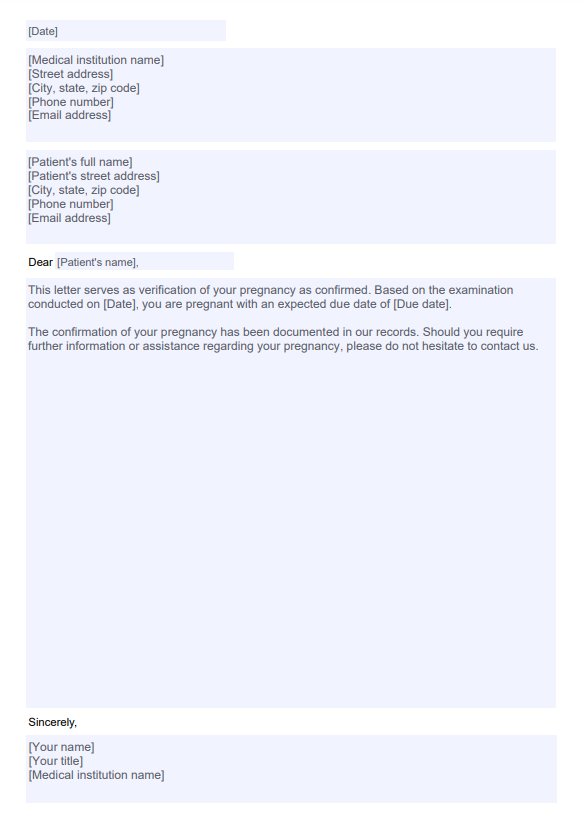The proof of pregnancy letter can be used for various official purposes, such as to grant maternity leave requests or health insurance coverage.

Pregnancy Verification Letter
Use our Pregnancy Verification Letter template for a more structured approach to your clinical documentation.
Use Template
Pregnancy Verification Letter Template
Commonly asked questions
A qualified physician or healthcare provider who has examined the individual visited can verify the pregnancy.
The physician or healthcare provider verifying the pregnancy must sign the letter to confirm its authenticity.
EHR and practice management software
Get started for free
*No credit card required
Free
$0/usd
Unlimited clients
Telehealth
1GB of storage
Client portal text
Automated billing and online payments











